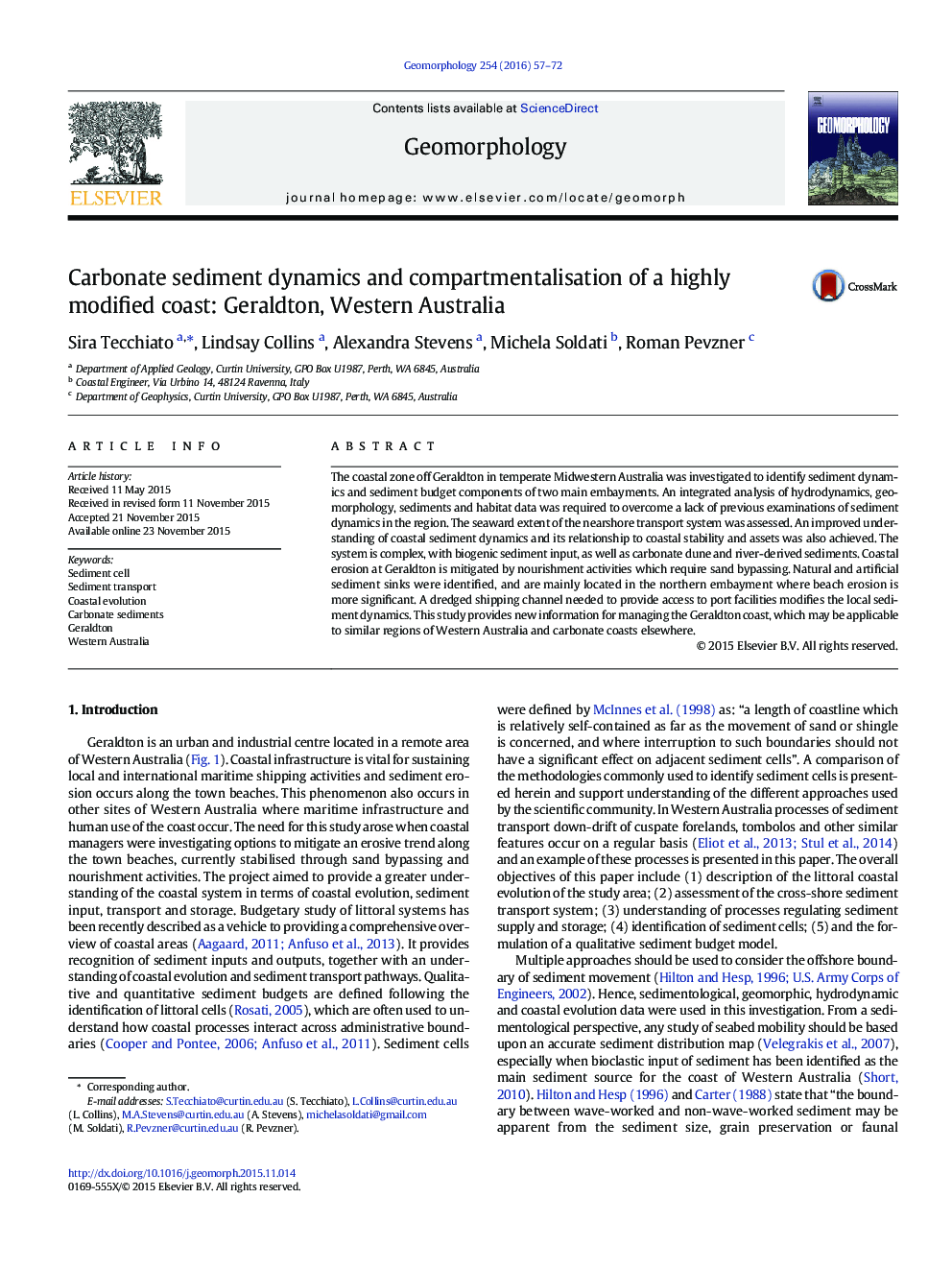| Article ID | Journal | Published Year | Pages | File Type |
|---|---|---|---|---|
| 4684096 | Geomorphology | 2016 | 16 Pages |
•Sediment cells of two adjacent littoral embayments were identified.•Biogenic sediment supply from seagrass meadows is the main sediment source.•Depth of closure was assessed using integration of different data.•Coastal infrastructure modifies sediment dynamics.•Patterns of coastal evolution are linked to natural processes or to human intervention.
The coastal zone off Geraldton in temperate Midwestern Australia was investigated to identify sediment dynamics and sediment budget components of two main embayments. An integrated analysis of hydrodynamics, geomorphology, sediments and habitat data was required to overcome a lack of previous examinations of sediment dynamics in the region. The seaward extent of the nearshore transport system was assessed. An improved understanding of coastal sediment dynamics and its relationship to coastal stability and assets was also achieved. The system is complex, with biogenic sediment input, as well as carbonate dune and river-derived sediments. Coastal erosion at Geraldton is mitigated by nourishment activities which require sand bypassing. Natural and artificial sediment sinks were identified, and are mainly located in the northern embayment where beach erosion is more significant. A dredged shipping channel needed to provide access to port facilities modifies the local sediment dynamics. This study provides new information for managing the Geraldton coast, which may be applicable to similar regions of Western Australia and carbonate coasts elsewhere.
